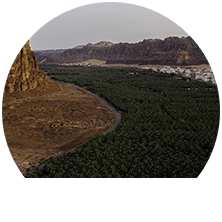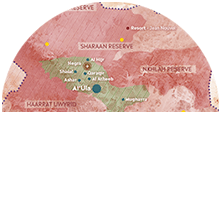HOW DID YOU
GO ABOUT ORGANIZING
THE SPACE?
0

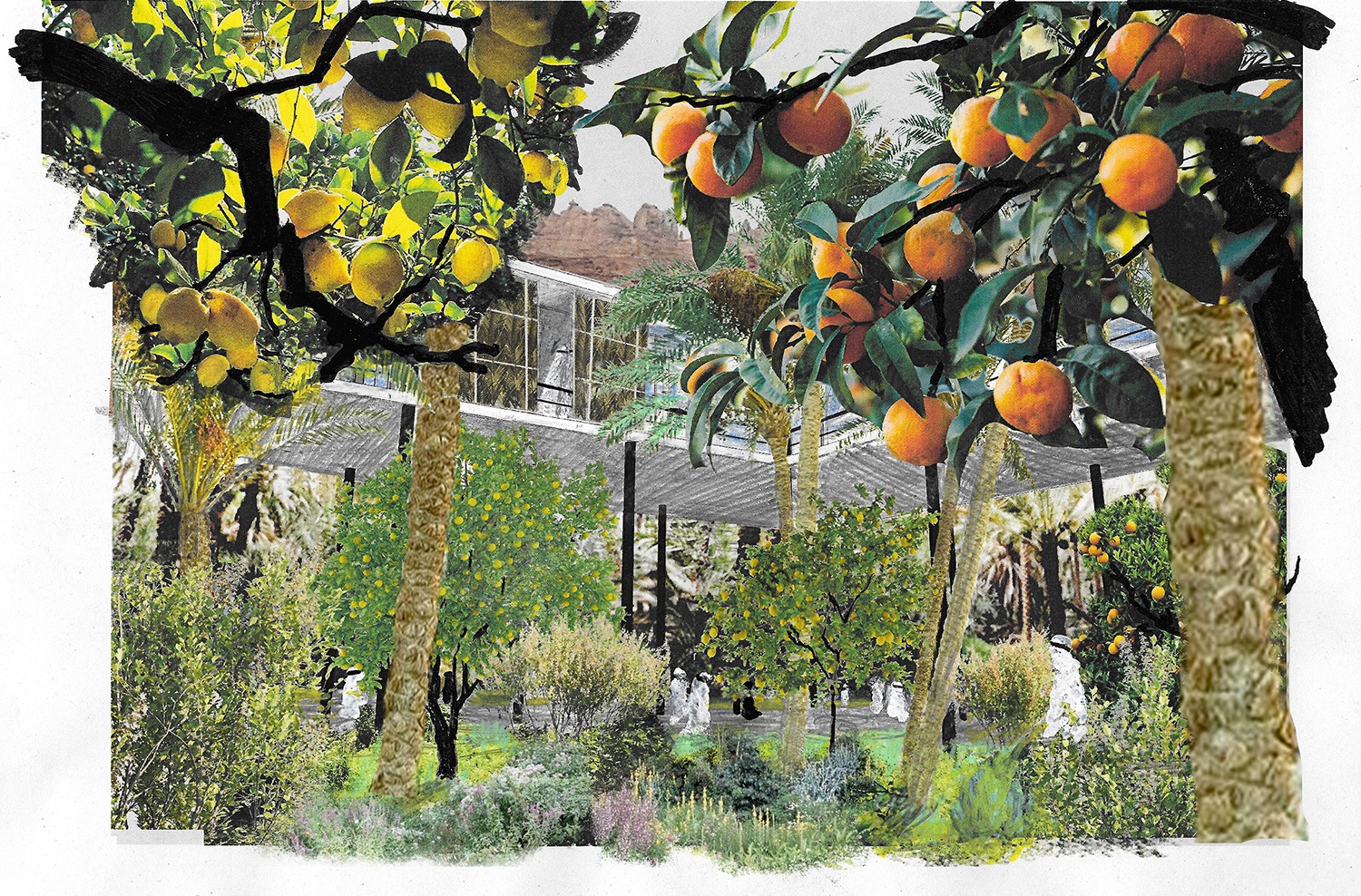


HOW DID YOU
GO ABOUT ORGANIZING
THE SPACE?
Jean-Philippe Vassal:
The project can be thought of as like a fabric. Its threads are structural but also retain a specific functional component, linked to dining, culture and the arts. The challenge is to integrate the spaces, regardless of their density, by promoting as many crossover points as possible. For example, an artist such as a creative writer will be able to experience a view of a farmer tending a small garden. The right architecture allows such environments to coexist harmoniously.
Anne Lacaton:
We will use distance to define spaces without separating them. Thanks to this play on height and thickness, we enable such cohabitation in the most fruitful way possible.

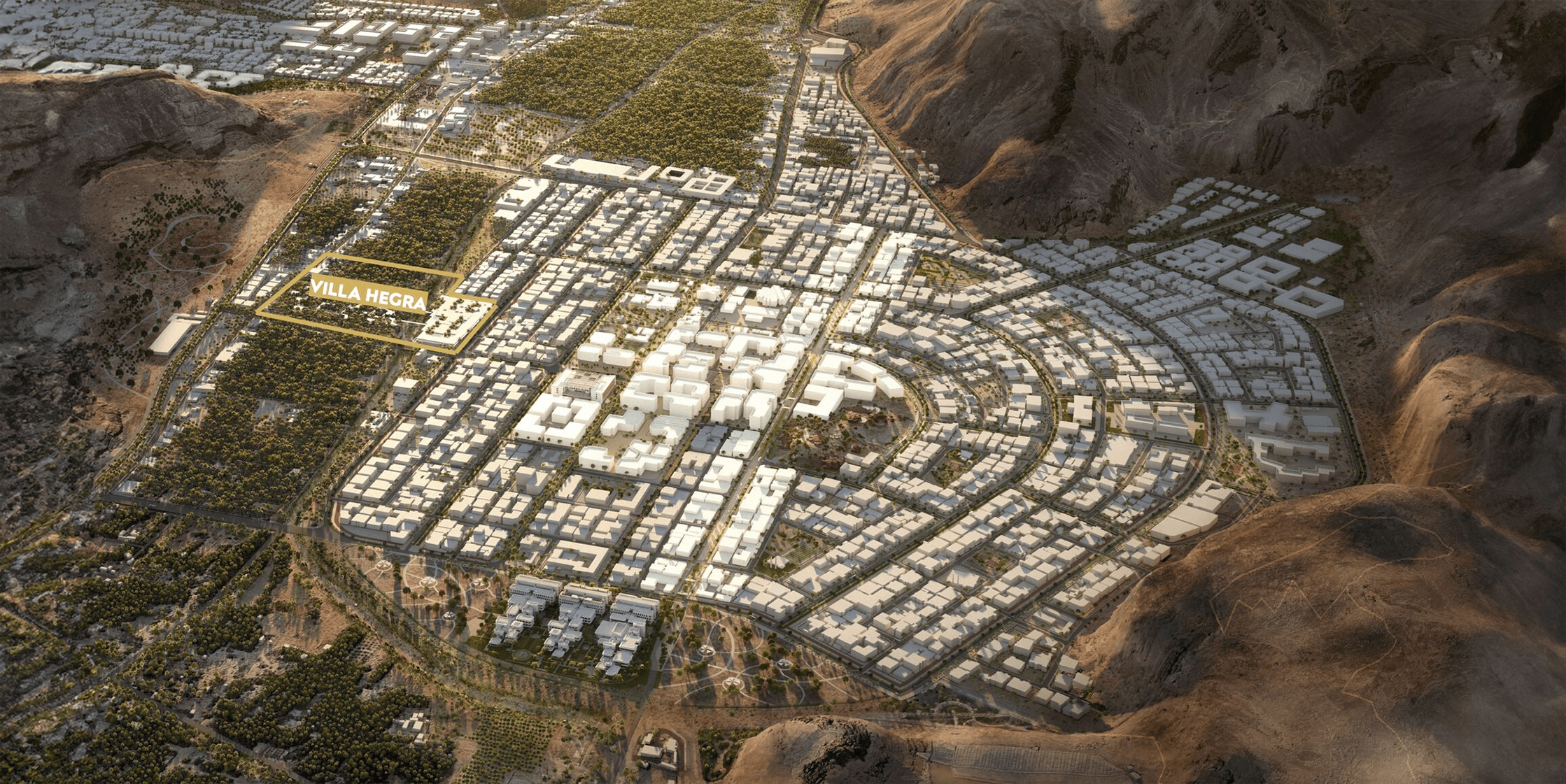
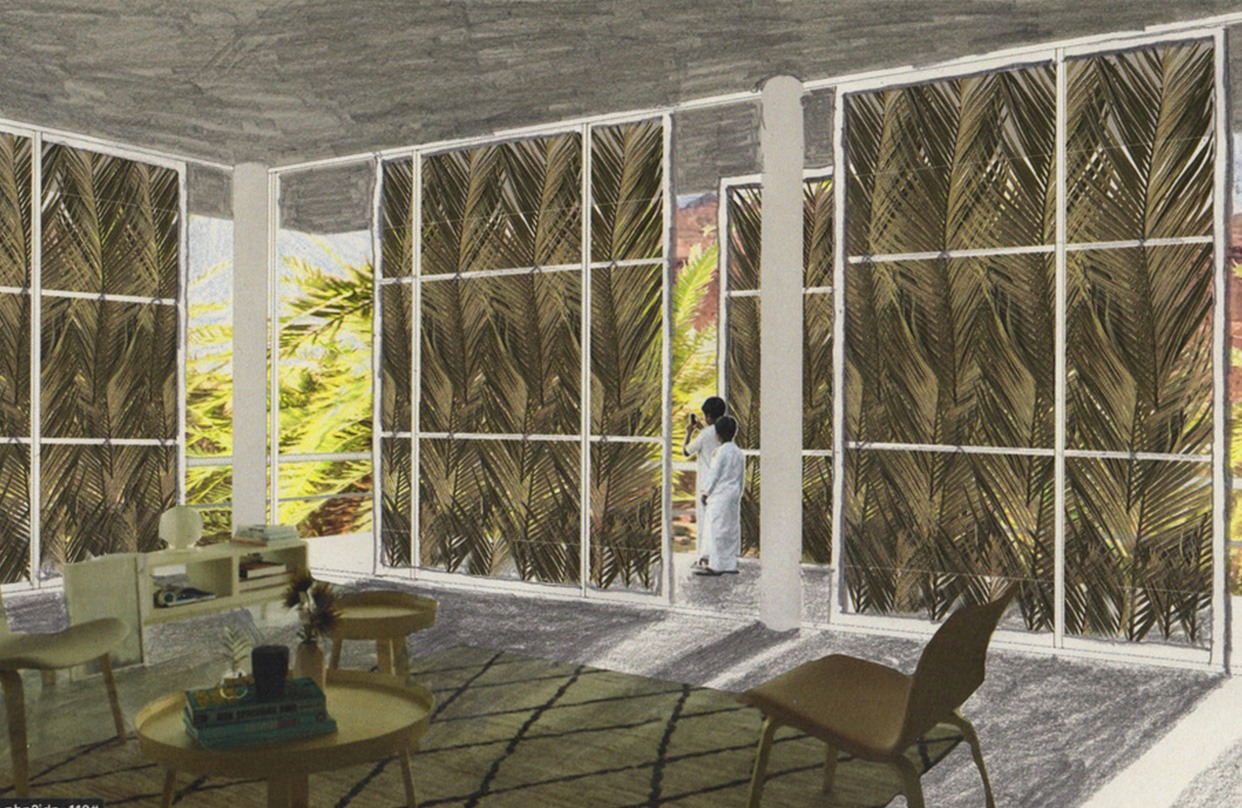

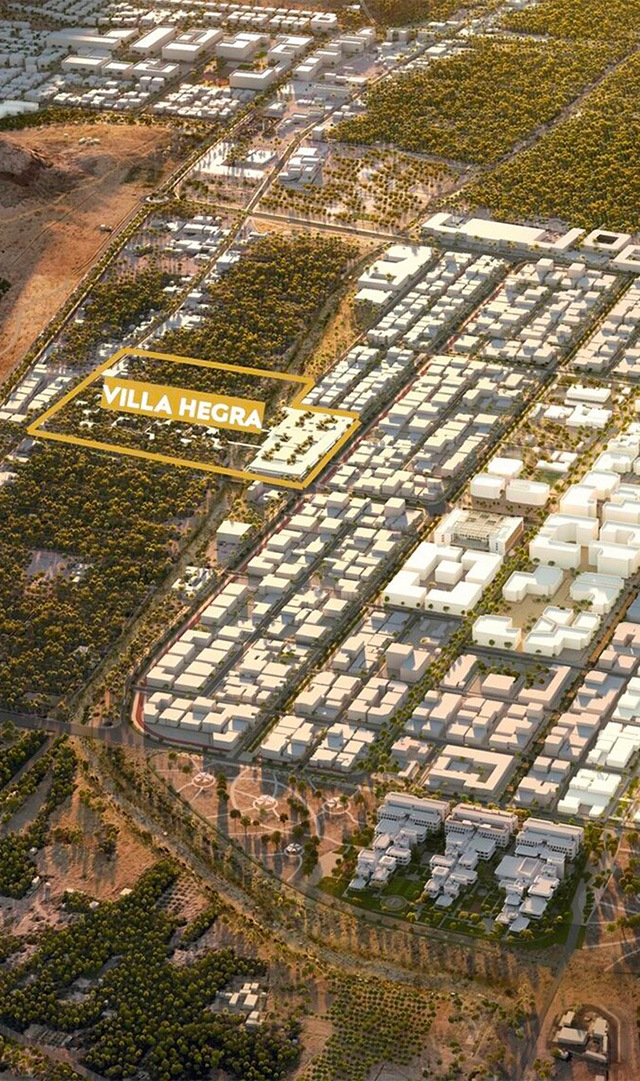


Jean-Philippe Vassal:
We interpreted the choice of the land as a commitment for the Villa Hegra to be an urban facility (and not a museum), a place of convergence and crossing, a place dedicated to bringing people together.
Anne Lacaton:
There was a very clear demand, in parallel to its function as an artist residence, to create an open public space, accessible to local residents. There are plenty of spaces available in the project for this and in particular the very large and completely open park of the oasis.


WHAT ASPECTS
ARE SPECIFIC
TO THE PROJECT?
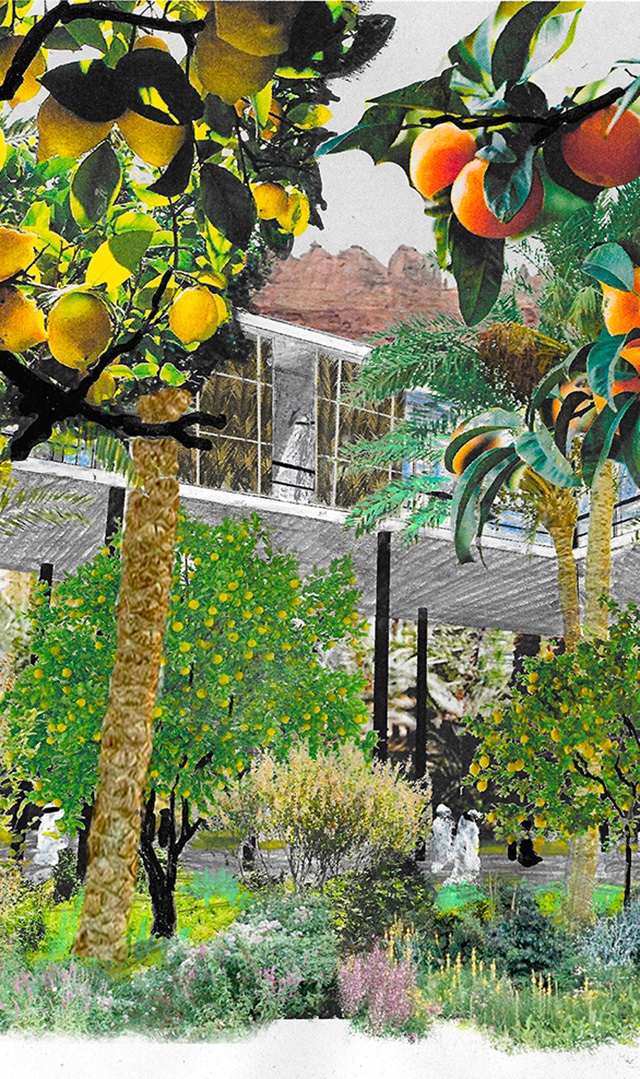
Jean-Philippe Vassal:
Our proposal is to free up the ground over practically the entire area in order to guarantee free movement. There will be two layers: one on the surface, which will be open-plan and will connect the city and the oasis, and one above, with the various activities. The construction will be quite dense on the urban side and the closer we go towards the oasis the less dense and more dispersed it will be, without overly impacting the ground level, so preserving the natural elements and agriculture. We imagined a floating infrastructure 6 meters above the denser parts of the city and 7/8 meters high towards the palm groves. Similar to an observatory, it will be possible to move across the site and see what is happening below. The shape of the wadi will be reworked, while preserving it as a natural space, so that it remains public and accessible by walkers when it is dried out.



WHAT HAVE YOU
COME UP WITH
TO MEET
THESE DEMANDS?

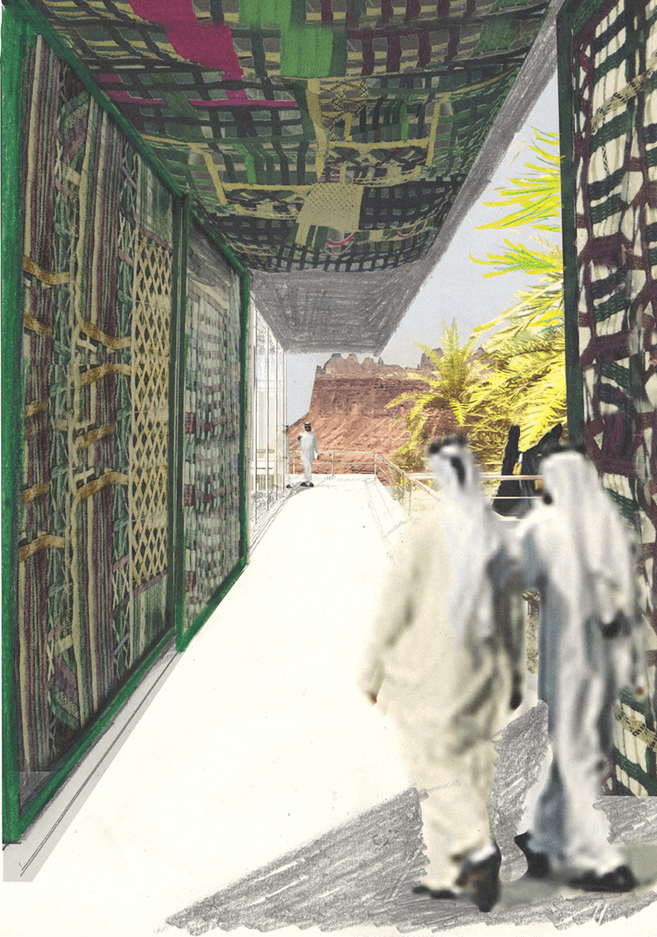
Jean-Philippe Vassal:
Architecture is a system that creates new bridges and new relationships. So, we work with all the surrounding elements: the light, the air, the plants, the people and the history of the location.
Jean-Philippe Vassal:
Architecture is a system that creates new bridges and new relationships. So, we work with all the surrounding elements: the light, the air, the plants, the people and the history of the location.
Anne Lacaton:
Our process is based primarily on an understanding of locations but also on the extent of available space. We are very observant of the environmental context in which the projects are anchored because it seems extremely important to us to take into account and integrate all available values and perspectives. In particular we aim to establish a collaborative relationship with the climate and nature, especially when these two aspects are as dominant a factor as in AlUla.
Anne Lacaton:
Our process is based primarily on an understanding of locations but also on the extent of available space. We are very observant of the environmental context in which the projects are anchored because it seems extremely important to us to take into account and integrate all available values and perspectives. In particular we aim to establish a collaborative relationship with the climate and nature, especially when these two aspects are as dominant a factor as in AlUla.


HOW DO YOU CONCEPTUALIZE THE ARCHITECTURE OF THIS PROJECT?
Anne Lacaton:
The Old Town of AlUla inspired us. With its very dense winter district and its more spread-out, summer district surrounding the oasis, we are able to perceive something much more contemporary: the remarkable intelligence in the layout of the city with respect to the climate. The way these two districts were built, how they play with geography and climate, immediately spoke to us. The land of the Villa Hegra is also composed of two parts, on each side of the wadi, so we quickly made the connection. This became the main theme of the project: how to work with this density, combining the three programs: the Villa Hegra, with its cultural spaces (amphitheater, library, etc.), the Ferrandi school and the hotel and at the same time ensuring this link with the palm grove.
Jean-Philippe Vassal:
A large part of the work involved freeing ourselves from the almost overwhelming impressions that we felt when discovering the desert: its geological structures and its archaeological remains. We had to remind ourselves that we needed to focus on life in the oasis as it is lived today.
Jean-Philippe Vassal:
A large part of the work involved freeing ourselves from the almost overwhelming impressions that we felt when discovering the desert: its geological structures and its archaeological remains. We had to remind ourselves that we needed to focus on life in the oasis as it is lived today.


HOW DID YOU
SET ABOUT THE PROJECT,
GIVEN THE EXCEPTIONAL
NATURAL HABITAT OF ALULA?





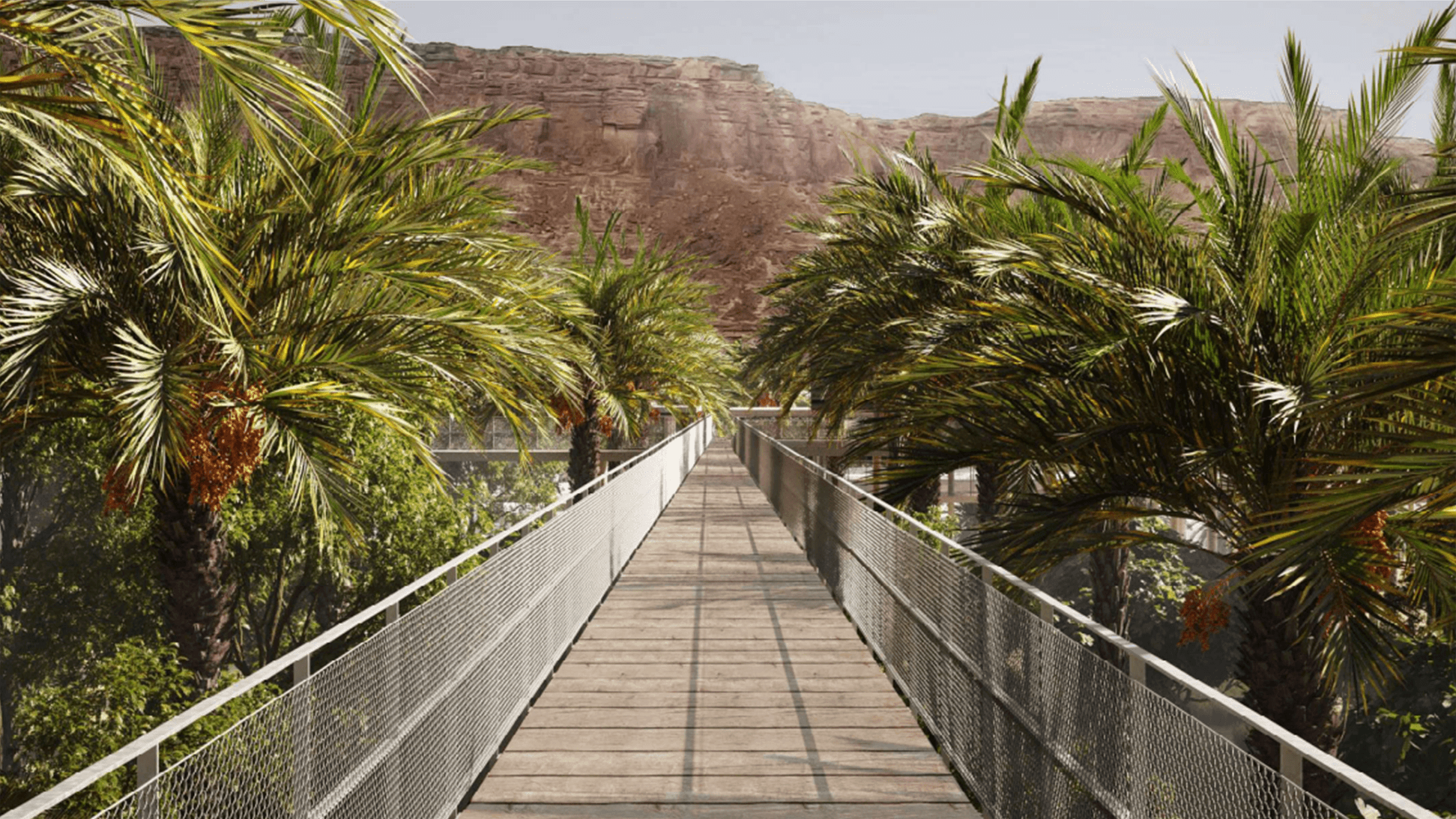
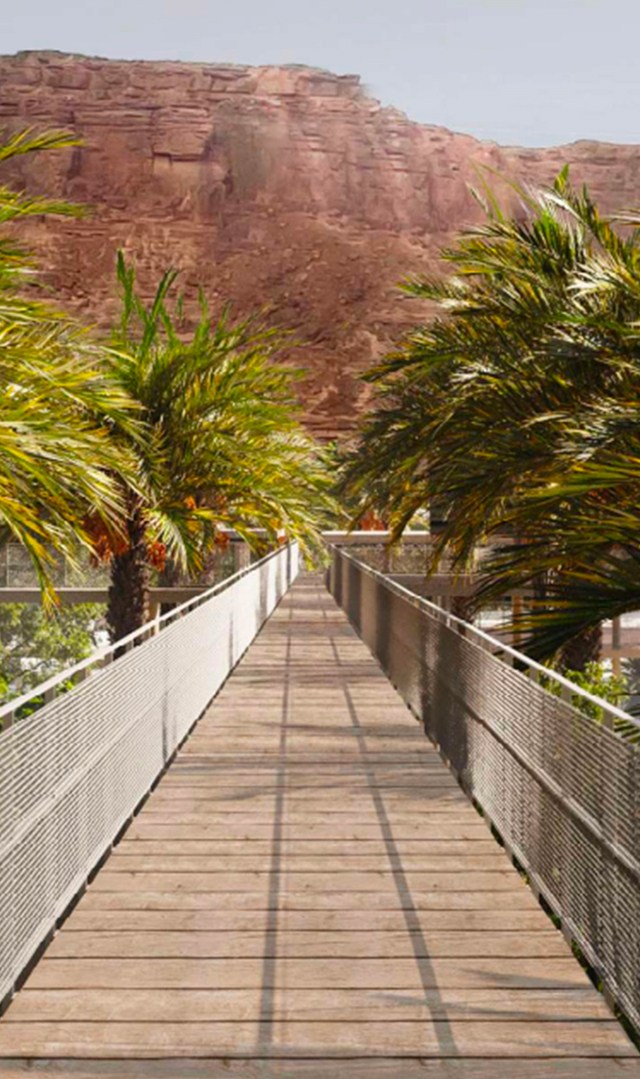

Account
- Partager -


- Partager -




















BACK TO HOMEPAGE
TOP
NEXT





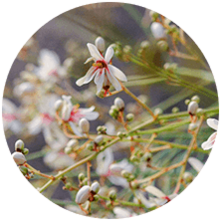

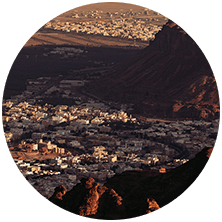

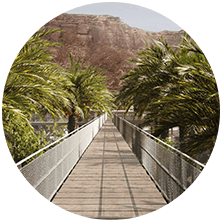



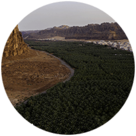




VISIT AFALULA.COM
READ THE PREVIOUS ISSUES
Subscribe to the newsletter




